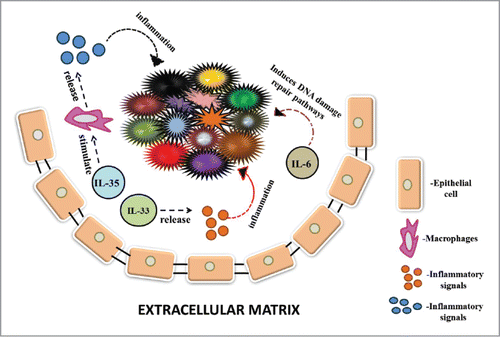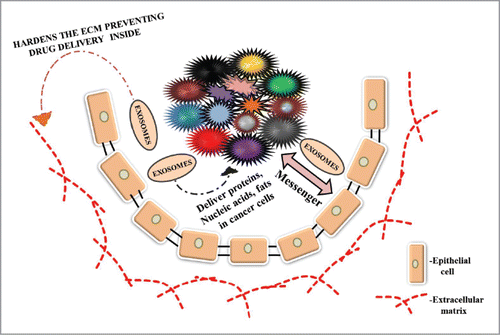Figures & data
Figure 1. This figure depicts the role of cytokines in cancer growth, invasion and drug-resistance. IL-6, an interleukin enhances tumour survival and progression by inducing various DNA damage repair pathways in cancer cells. IL-33 releases various inflammatory factors that cause inflammation in the tumour cells. IL-35 stimulates macrophages to produce many inflammatory signals that cause inflammation.

Figure 2. This figure illustrates the role of exosomes in cancer progression, malignancy and drug-resistance. Exosomes are secreted by normal and cancer cells. These exosomes act as a mediator of communication between cancer and normal cells acting as a messenger. They are also involved in transport of proteins, nucleic acids and lipids to cancer cells. Exosomes released by cancer cells toughen the extracellular matrix acting as a barrier to entry of drugs inside the cancer cells leading to drug resistance.

Figure 3. This figure describes the role of extracellular secreted RNAs (small RNAs and mRNA) and DNAs in tumor growth, transformation, progression and communication. MiRNA 210 is released by cancer developing cells and normal cells in tumor derived exosomes. MiRNA 210 is taken by normal cells leading to change in Mi-RNA levels further leading to transformation of normal cells to cancer cells. MiRNA21 and miRNA155 are released by normal and cancer cells which act as messenger between different cells of the tumor playing a role in communication. Cancer cells also secrete oncogenic DNA which converts normal cells to tumor cells.

